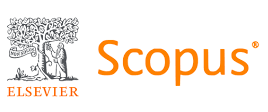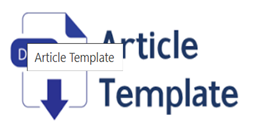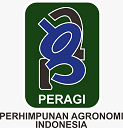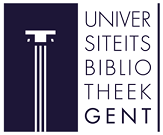Impact of System of Rice Intensification (SRI) Organic Rice on Farmer Welfare in Kolaka District, Southeast Sulawesi, Indonesia
Abstract
This research looks at how the System of Rice Intensification (SRI) organic rice growing system affects the well-being of farmers in Baula District, Kolaka Regency. The study looks at income, productivity, production costs, and farmers' views on stakeholder support in order to fill in the gaps in the scant empirical evidence on the socio-economic advantages of SRI-organic practices in Indonesia. We used a quantitative technique using a survey method and comparative descriptive analysis with 56 respondents who were chosen for a specific reason (28 organic SRI farmers and 28 conventional farmers). Farm income computation, the Independent Sample T-Test, and the Likert-scale-based perception analysis were some of the analytical methods used. The results showed that organic SRI farmers earned an average income of Rp125,195,859.00 ha⁻¹ season⁻¹, significantly higher than inorganic farmers (Rp25,874,641 ha season-1). Organic SRI land productivity was recorded at 7,493.16 kg ha-1, more efficient than the inorganic system (6,106.58 kg/ha). Although the production cost of SRI is higher, the economic value is still more profitable due to the higher selling price of organic grain and input efficiency. Farmers' perception of the role of stakeholders is also classified as "high", with an average Likert score of 4.37. They said that training, help with inputs, and access to markets were the most important components, and PT Vale Indonesia, agricultural extension staff, and local government helped make these things happen. These results show how important it is for institutions to work together to improve technical and economic outcomes. This research shows how useful SRI-organic systems may be as a model for community-based, sustainable agriculture that can be scaled up to enhance the lives of people in rural areas.
Keywords
Full Text:
PDFReferences
Agnesti, G. M., Purnomo, S. S., & Wijaya, I. P. E. (2023). Analisis komparasi kelayakan usahatani padi semi organik dan non organik pada Gapoktan Saluyu Di Desa Cilamaya, Cilamaya Wetan, Karawang. Januari, 9(1), 203–213. https://doi.org/10.25157/ma.v9i1.8345
Anggita, A. H., & Suprehatin, S. (2020). Apakah usahatani padi organik lebih menguntungkan? Bukti dari desa Pringkasap kabupaten Subang. Jurnal Ekonomi Pertanian Dan Agribisnis, 4(3), 576–592. https://doi.org/10.21776/ub.jepa.2020.004.03.12
Bünemann, E. K., Bongiorno, G., Bai, Z., Creamer, R. E., De Deyn, G., De Goede, R., Fleskens, L., Geissen, V., Kuyper, T. W., & Mäder, P. (2018). Soil quality–A critical review. Soil Biology and Biochemistry, 120, 105–125. https://doi.org/10.1016/j.soilbio.2018.01.030
Charina, A., Kusumo, R. A. B., Sadeli, A. H., & Deliana, Y. (2018). Faktor-faktor yang mempengaruhi petani dalam menerapkan standar operasional prosedur (SOP) sistem pertanian organik di Kabupaten Bandung Barat. Jurnal Penyuluhan, 14(1), 68–78. https://doi.org/10.25015/penyuluhan.v14i1.16752
Etikan, I., Musa, S. A., & Alkassim, R. S. (2015). Comparison of Convenience Sampling and Purposive Sampling. American Journal of Theoretical and Applied Statistics, 5(1), 1–4. https://doi.org/10.11648/j.ajtas.20160501.11
Fadlina, I. M., Supriyono, B., & Soeaidy, S. (2013). Perencanaan Pembangunan Pertanian Berkelanjutan (Kajian tentang Pengembangan Pertanian Organik di Kota Batu) Sustainable Development of Agrocultural (Studies on Organic Agricultural Development in Batu City). J. Pal UB, 4(1), 43–57. https://jpal.ub.ac.id/index.php/jpal/article/view/115
Glover, D., Sumberg, J., & Andersson, J. A. (2016). The adoption problem; or why we still understand so little about technological change in African agriculture. Outlook on AGRICULTURE, 45(1), 3–6. https://doi.org/10.5367/oa.2016.0235
Gufron, D. R., Inayah, T., & Junaidi, J. (2021). Perbandingan Pendapatan Usahatani Padi Organik dan Padi Anorganik di Desa Watukebo, Kecamatan Blimbingsari Kabupaten Banyuwangi. Sharia Agribusiness Journal, 1(2), 153–168. https://doi.org/10.15408/saj.v1i2.22282
Gumilar, V., Sudrajat, S., & Setia, B. (2020). Strategi pengembangan padi organik (Studi kasus pada kelompok tani Putra Mandiri di desa Linggaraja kecamatan Sukaraja kabupaten Tasikmalaya). Jurnal Ilmiah Mahasiswa Agroinfo Galuh, 7(1), 142–155. https://doi.org/10.25157/jimag.v7i1.2570
Handayani, S., Anggraini, N., & Yolandika, C. (2018). Efisiensi Usahatani Padi Organik di Kecamatan Candipuro. Prosiding Seminar Nasional Pengembangan Teknologi Pertanian. https://doi.org/10.25181/prosemnas.v2018i0.1135
Heryadi, D. Y., Noor, T. I., & Hamdani, J. S. (2022). Implementatif Agribisnis Padi Organik Berkelanjutan Melalui Pendekatan Pentahelix. Jurnal Agribest, 6(1), 1–10. https://doi.org/10.32528/agribest.v6i1.7525
Husnarti, H., & Hidayat, R. (2023). Analisis Perbandingan Pendapatan Usahatani Padi Organik Dengan Padi Non Organik Di Nagari Lubuak Jantan Kecamatan Buo Utara Kabupaten Tanah Datar. Paradigma Agribisnis, 6(1), 60–67. https://doi.org/10.33603/jpa.v6i1.8540
Iqbal, M., Qarni, W., & Harahap, M. I. (2023). Penerapan metode system of rice intensification (SRI) dalam upaya peningkatan produksi dan peningkatan kesejahteraan petani Kecamatan Sakti. Jurnal Informatika Ekonomi Bisnis, 989–994. https://doi.org/10.37034/infeb.v5i3.698
Kassam, A., Stoop, W., & Uphoff, N. (2011). Review of SRI modifications in rice crop and water management and research issues for making further improvements in agricultural and water productivity. Paddy and Water Environment, 9, 163–180. https://doi.org/10.1007/s10333-011-0259-1
Kilelu, C. W., Klerkx, L., Leeuwis, C., & Hall, A. (2011). Beyond knowledge brokering: an exploratory study on innovation intermediaries in an evolving smallholder agricultural system in Kenya. Knowledge Management for Development Journal, 7(1), 84–108. https://doi.org/10.1080/19474199.2011.593859
Klerkx, L., & Jansen, J. (2010). Building knowledge systems for sustainable agriculture: supporting private advisors to adequately address sustainable farm management in regular service contacts. International Journal of Agricultural Sustainability, 8(3), 148–163. https://doi.org/10.3763/ijas.2009.0457
Lamangantjo, C. J., & Jannah, M. (2024). Penguatan Tata Kelola dan Kelembagaan Industri Biopestisida: Strategi Inovatif Menuju Pertanian Berkelanjutan di Kabupaten Gorontalo. MOPOONUWA: Jurnal Pengabdian Kepada Masyarakat, 1(3), 113–119. https://ejurnal.bio.fmipa.ung.ac.id/index.php/mopoonuwa/article/view/16
Lori, M., Symnaczik, S., Mäder, P., De Deyn, G., & Gattinger, A. (2017). Organic farming enhances soil microbial abundance and activity—A meta-analysis and meta-regression. PloS One, 12(7), e0180442. https://doi.org/10.1371/journal.pone.0180442
Mäder, P., Fliessbach, A., Dubois, D., Gunst, L., Fried, P., & Niggli, U. (2002). Soil fertility and biodiversity in organic farming. Science, 296(5573), 1694–1697. https://doi.org/https://doi.org/10.1126/science.1071148
Maharani, E. Z., Nurlaela, S., & Puspitojati, E. (2024). Determinan Faktor dalam Penerapan Sistem Pertanian Organik pada Petani Anggota Aliansi Petani Padi Organik Boyolali (APPOLI). Jurnal Penyuluhan, 20(02), 313–322. https://doi.org/10.25015/20202449335
Mardliyah, A., & Arsana, P. (2018). Hubungan karakteristik sosial ekonomi dengan tingkat adopsi petani padi organik di Kecamatan Seputih Raman Kabupaten Lampung Tengah. Jurnal Wacana Pertanian, 14(1), 17–23. https://doi.org/10.37694/jwp.v14i1.9
Moore, M., Razafindrina, K., Méndez, V. E., & Niles, M. T. (2024). An analysis of the adoption of the “system of rice intensification”(SRI): why a homegrown technique has yet to take seed among rice farmers in Madagascar. Cogent Food & Agriculture, 10(1), 2319932. https://doi.org/10.6084/m9.figshare.23732466
Nurmastiti, A., & Wianto, A. O. (2024). Hubungan Karakteristik Petani Terhadap Tingkat Penerapan Budidaya Padi Organik di Kabupaten Karanganyar. Agritech: Jurnal Fakultas Pertanian Universitas Muhammadiyah Purwokerto, 26(1), 18–22. https://doi.org/10.30595/agritech.v26i1.22475
Oktaviani, D. A., & Lidyana, N. (2024). Peran dan fungsi kelembagaan agribisnis sebagai upaya pembangunan pertanian serta peningkatan kesejahteraan petani. Jurnal Ilmiah Sosio Agribis, 23(2), 101–107. https://doi.org/10.30742/jisa23220233475
Pratiwi, D. A., Maryam, S., & Balkis, S. (2019). Analisis Pendapatan Usahatani Kelapa Sawit (Elaeis Guineensis Jacq.) Di Kecamatan Waru Kabupaten Penajam Paser Utara (Income Analysis of Oil Palm Farming (Elaeis guineensis Jacq.) in Waru Subdistrict, Penajam Paser Utara District). Jurnal Agribisnis Dan Komunikasi Pertanian (Journal of Agribusiness and Agricultural Communication), 3(1), 9–16. https://doi.org/10.35941/jakp.3.1.2020.2855.9 -16
Pretty, J. (2008). Agricultural sustainability: concepts, principles and evidence. Philosophical Transactions of the Royal Society B: Biological Sciences, 363(1491), 447–465. https://doi.org/10.1098/rstb.2007.2163
Pretty, J., & Bharucha, Z. P. (2014). Sustainable intensification in agricultural systems. Annals of Botany, 114(8), 1571–1596. https://doi.org/10.1093/aob/mcu205
Pretty, J. N. (1995). Participatory learning for sustainable agriculture. World Development, 23(8), 1247–1263. https://doi.org/10.1016/0305-750X(95)00046-F
Rahmaniah, H., Darma, R., Asrul, L., & Taufik, D. K. (2020). The potential of organic agriculture, soil structure and farmers income for inclusive agriculture sustainability: a review. IOP Conference Series: Earth and Environmental Science, 575(1), 12099. https://doi.org/10.1088/1755-1315/575/1/012099
Rangga, K. K., Gitosaputro, S., Yanfika, H., Hasanudin, T., Syafani, T. S., & Ma’rifati, M. N. (2024). Hubungan Karakteristik Sosial Ekonomi dengan Tingkat Adopsi Teknologi Usahatani Jagung di Desa Waringinsari Kecamatan Adiluwih Kabupaten Pringsewu. Jurnal Triton, 15(1), 170–186. https://doi.org/10.47687/jt.v15i1.702
Reganold, J. P., & Wachter, J. M. (2016). Organic agriculture in the twenty-first century. Nature Plants, 2(2), 1–8. https://doi.org/10.1038/nplants.2015.221
Roswita, R., & Riza, E. (2019). Persepsi, pemahaman dan tingkat penerapan sistem pertanian organik oleh petani dalam budidaya padi sawah di Sumatera Utara. Jurnal Pembangunan Nagari, 4(1), 33–44. https://doi.org/10.30559/jpn.v4i1.149
Saribanon, N., Ilmi, F., Rafsanzani, M. F., & Siregar, Z. (2024). Peran Pendampingan Dalam Proses Adopsi Teknologi Pertanian Padi Organik Di Desa Rahayu Kabupaten Tuban Jawa Timur. Populis: Jurnal Sosial Dan Humaniora, 9(1), 79–89. https://doi.org/10.47313/pjsh.v9i1.3662
Septiadi, D., & Mundiyah, A. I. (2020). Strategi pengembangan usaha tani sayuran berbasis pertanian organik. Agrifo: Jurnal Agribisnis Universitas Malikussaleh, 5(1), 35–43. https://doi.org/10.29103/ag.v5i1.2743
Sihaholo, M., & Sita, R. (2021). Hubungan Reforma Agraria dengan Peningkatan Kesejahteraan Rumah Tangga Petani. Jurnal Sains Komunikasi Dan Pengembangan Masyarakat [JSKPM], 5(3), 433–449. https://doi.org/10.29244/jskpm.v5i3.834
Styger, E., & Uphoff, N. (2016). The system of rice intensification (SRI): revisiting agronomy for a changing climate. https://cgspace.cgiar.org/server/api/core/bitstreams/4942ad32-993e-4d9b-abef-6345b6953cee/content
Suciati, L. P., Juanda, B., Fauzi, A., & Rustiadi, E. (2014). Peran Kelembagaan Perdesaan untuk Keberlanjutan Penerapan SRI di Kabupaten Karawang. Jurnal Ekonomi Dan Pembangunan Indonesia, 14(2), 1. https://doi.org/10.21002/jepi.v14i2.01
Sutarni, S., & Fitri, A. (2023). Analisis Kelayakan Finansial Usahatani Padi Sawah tanpa Pestisida Kimia. Agro Bali: Agricultural Journal, 6(1), 218–230. https://doi.org/10.37637/ab.v6i1.1168
Tavakol, M., & Dennick, R. (2011). Making sense of Cronbach’s alpha. Int J Med Educ, 2, 53–55. https://doi.org/10.5116/ijme.4dfb.8dfd
Tiwari, A. K. (2023). The role of organic farming in achieving agricultural sustainability: Environmental and socio-economic impacts. Acta Biology Forum, 2(2), 29–32. https://doi.org/10.51470/ABF.2023.2.2.29
Uphoff, N. (2003). Higher Yields with Fewer External Inputs? The System of Rice Intensification and Potential Contributions to Agricultural Sustainability. International Journal of Agricultural Sustainability, 1(1), 38–50. https://doi.org/10.3763/ijas.2003.0105
Uphoff, N., Kassam, A., & Harwood, R. (2011). SRI as a methodology for raising crop and water productivity: productive adaptations in rice agronomy and irrigation water management. Paddy and Water Environment, 9, 3–11. https://doi.org/10.1007/s10333-010-0224-4
Uphoff, N., Kassam, A., & Stoop, W. (2008). A critical assessment of a desk study comparing crop production systems: The example of the ‘system of rice intensification’versus ‘best management practice.’ Field Crops Research, 108(1), 109–114. https://doi.org/10.1016/j.fcr.2007.12.016
Wardana, A. S., Suwarto, S., & Lestari, E. (2024). Motivasi Petani dalam Penggunaan Pupuk Organik Juara di Kecamatan Jaten Kabupaten Karanganyar. BULLET: Jurnal Multidisiplin Ilmu, 2(3), 651–660. https://journal.mediapublikasi.id/index.php/bullet/article/view/2972
Wiartha, N. G. M., Diwyarthi, N. D. M. S. D., Adnyana, I. M. S., Jata, I. W., Darmiati, M., & Pratama, I. W. A. (2024). Kolaborasi Pentahelix di Desa Wisata Keliki Gianyar dalam Mendukung Pengembangan Wisata Budaya Berkelanjutan dan Ramah Lingkungan. Prosiding Seminar Hasil Penelitian Dan Pengabdian Kepada Masyarakat (SEHATI ABDIMAS), 7(1), 42–48. https://doi.org/10.47767/sehati_abdimas.v7i1.903
Refbacks
- There are currently no refbacks.


























